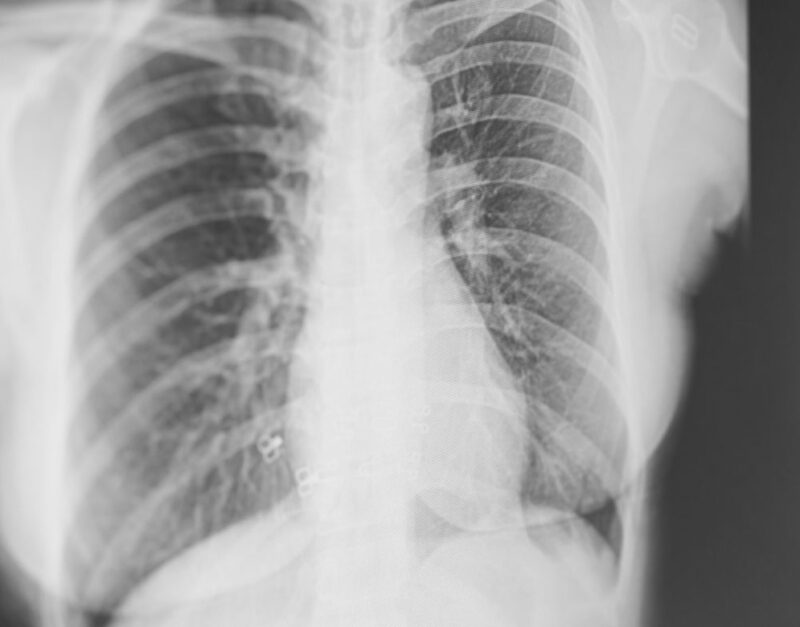 March 15, 2023
March 15, 2023 When a patient is diagnosed with mesothelioma, they typically receive a bleak prognosis. The 5-year survival rate is only 10 percent. Many factors affect the specific survival rate of each patient, but a new research study shows that a multimodal treatment plan can help mesothelioma patients live longer.
What is Mesothelioma?
Mesothelioma is a rare but aggressive cancer that is caused by exposure to asbestos. It often affects the pleura, the tissue that surrounds the lungs, and shows up 25 to 50 years after the initial exposure. Because it starts in a relatively small area of tissue, it can develop for years before patients begin to experience symptoms. These factors are part of the poor prognosis, as patients tend to be older, and cancer may be advanced by the time it is diagnosed.
Symptoms of mesothelioma include shortness of breath and pain when breathing, fatigue, and persistent coughing. These symptoms are similar to those of asthma, lung cancer, and other lung-related disorders, so it is important to see a doctor if you experience these symptoms, especially if you’ve been exposed to asbestos.
How are People Exposed to Asbestos?
Asbestos is a naturally occurring mineral. It was commonly used in residential and commercial construction materials because it resists heat, electricity, and corrosion. Although it was banned in many products in the late 1980s, it is still used in automotive, aerospace, and construction products and naturally occurs in talc. Homes, schools, and businesses built before 1991 may contain asbestos. Although asbestos-containing products are not likely to cause exposure unless they are disturbed, construction and demolition projects should include asbestos-mitigation procedures to prevent residents and workers from exposure to asbestos dust when materials are removed.
What Are the Typical Treatments for Mesothelioma?
As with other cancers, the main treatments include chemotherapy, radiation treatment, surgery, and immunotherapy. Depending on the severity of the cancer and any other underlying health issues, doctors may choose to combine treatments or focus on the one that has the most chance for success.
What Treatment Plan is Recommended by this Study?
After looking at 64 patients who were treated for mesothelioma at one cancer center over a period of 10 years, the researchers found that patients who received a combination of surgery, chemotherapy, and radiation had longer lives than the average. The five-year survival rate of these patients was 20 percent instead of the typical 10 percent. They also found that the survival rate improved for all patients, no matter their age, gender, or type of tumor.
Surgery was the constant in this study. When possible, surgeons spared the lungs, removing affected tissue surrounding the lungs only. Patients who received chemotherapy before surgery then received radiation treatment afterward. Patients who did not receive chemo prior to surgery then received a combination of radiation and chemo after surgery.
What Can Other Patients and Doctors Learn from this Study?
Because mesothelioma is rare, it can be challenging to run fully randomized studies, as is preferred for medical research. So, the results of this study of a small group of patients may be just the first step in understanding how to combine treatments for patients. Also, because many patients were treated before immunotherapy drugs were approved by the FDA, more research is needed to see how adding these drugs to the multimodal treatment program can affect longevity after diagnosis.
One important finding is the effectiveness of lung-sparing surgery for treating mesothelioma. This surgery isn’t as effective for certain lung cancers, but it was an important part of the treatment plan for the patients in this study. Researchers also believe it was critical in improving the longevity of the patients. Going forward, doctors may want to consider surgery as a key part of the treatment plan to improve their patients’ outcomes. Researchers conducting clinical trials may also want to consider adding surgery to the treatment plan.
How We Help Victims of Asbestos ExposureSeek justice with the help of our experienced asbestos attorneys. Our asbestos law firm has represented individuals like you affected by asbestos exposure for over 20 years, aggressively fighting the corporate giants responsible for their dangerous products. If you or a loved one were exposed to asbestos or suffered from a disease caused by asbestos, like mesothelioma, we can help.



